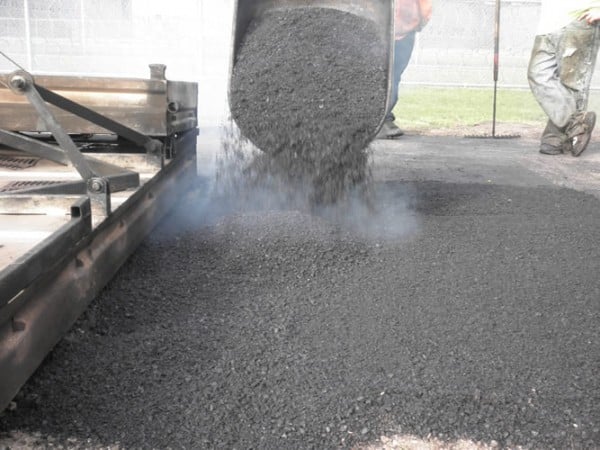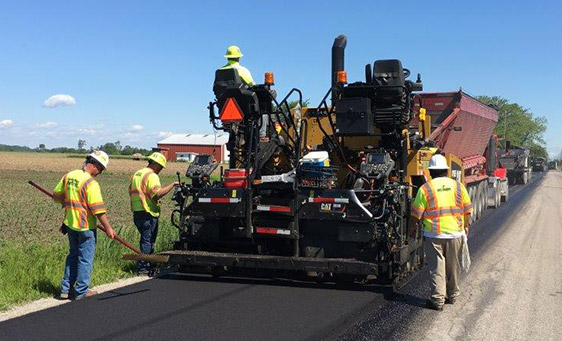Elevate the Feel And Look of Your Property with Specialist Commercial Parking Lot Paving
Elevate the Feel And Look of Your Property with Specialist Commercial Parking Lot Paving
Blog Article
Unlocking the Keys of Warm Mix Asphalt Modern Technology
Discovering the depths of hot mix asphalt innovation discovers a globe where accurate solutions and careful processes merge to shape our roads and infrastructure. The blend of aggregates, fillers, and binders isn't just a building task but a critical orchestration of longevity and performance.
Significance of Hot Mix Asphalt
Hot Mix Asphalt plays a vital role in modern framework advancement due to its sturdiness and cost-effectiveness. As the most frequently made use of leading product for roadways, highways, and parking area, Warm Mix Asphalt uses a series of advantages that add to its importance in construction jobs. One crucial benefit is its capability to endure heavy website traffic lots and severe weather, providing a long-lasting and reputable surface area for transport networks. Additionally, Hot Mix Asphalt is economical in both first construction and lasting upkeep, making it a favored option for several infrastructure tasks.
The longevity of Hot Mix Asphalt stems from its composition, which includes accumulations, binder, and filler products that are meticulously picked and blended to fulfill specific efficiency demands. This precise combination causes a strong and flexible pavement that can sustain regular use without considerable deterioration. Hot Mix Asphalt is 100% recyclable, additional enhancing its sustainability and environmental advantages. Overall, the importance of Warm Mix Asphalt in framework advancement can not be underrated, as it remains to be a keystone of contemporary building and construction practices.
Parts of Asphalt Mixes
The composition of asphalt mixes consists of carefully selected aggregates, binder, and filler products that are crucial for achieving details efficiency demands. Aggregates are the key element of asphalt mixes, giving toughness and security. The binder, normally bitumen or asphalt cement, holds the aggregates with each other and supplies adaptability and toughness to the mix.
The mix and percentage of these components play a substantial role in figuring out the quality and efficiency of the asphalt mix. Engineers thoroughly develop the mix to meet particular needs, taking into consideration aspects like web traffic quantity, climate conditions, and sidewalk life expectancy. Correct choice and balancing of accumulations, binder, and fillers are necessary for producing durable, lasting asphalt pavements.
Combining and Production Methods

Once the aggregates are selected, the binder, commonly asphalt cement, is contributed to bind the materials together. The binder's high quality and quantity significantly impact the mix's resistance, toughness, and adaptability to ecological variables. In addition, fillers like hydrated lime or Rose city cement might be included to boost certain qualities of the asphalt mix, such as its workability or dampness resistance.
Throughout production, the accumulations and binder are heated, generally between 250-325 ° F(121-163 ° C ), to help with blending and make sure appropriate finish of the accumulations. The mixing process needs to be comprehensive to attain an uniform blend that promotes the wanted efficiency attributes of the asphalt. Numerous methods, such as batch blending or drum blending, are employed to achieve consistent and high-quality asphalt blends for building tasks.
Aspects Influencing Asphalt Efficiency
Factors influencing asphalt efficiency include a variety of variables that impact the resilience, longevity, and total high quality of asphalt pavements. One key factor is the top quality of products utilized in the asphalt mix. The type and resource of accumulations, the binder top quality, and the additives all play a considerable duty in figuring out the efficiency of the asphalt pavement. The navigate to these guys gradation of accumulations is crucial as it influences the mix's resistance, workability, and stability to fracturing and rutting.

Layout considerations, such as pavement density and drainage, are crucial angled parking in ensuring the lasting efficiency of the asphalt pavement. By carefully considering these aspects, engineers and specialists can enhance asphalt performance and enhance the solution life of pavements.
Sustainable Practices in Asphalt Modern Technology

Additionally, the advancement of warm-mix asphalt (WMA) modern technologies has gotten grip in recent times. WMA enables for the production and placement of asphalt blends at lower temperatures compared to conventional hot-mix asphalt, causing lowered energy intake and greenhouse gas discharges. The use of permeable asphalt blends can aid reduce stormwater drainage problems by allowing water to infiltrate through the sidewalk and right into the ground, advertising all-natural water purification and recharge procedures. By executing these lasting techniques, the asphalt sector can add to developing a much more resistant and environmentally friendly infrastructure network.
Verdict
In final thought, warm mix asphalt innovation plays a crucial function in modern facilities development because of its resilience and cost-effectiveness. By carefully balancing parts, employing correct blending strategies, and taking into consideration various factors, designers can produce top notch asphalt mixes that withstand rush hour lots and severe weather. Accepting lasting techniques, such as using recycled materials and warm-mix technologies, even more improves the ecological friendliness of asphalt modern technology.
Mixing and manufacturing methods in warm check out this site mix asphalt technology include the precise combination and processing of aggregates, binder, and fillers to create a high-performance and durable asphalt mix.Aspects influencing asphalt performance include a range of variables that affect the sturdiness, long life, and overall top quality of asphalt pavements. Lasting methods in asphalt innovation encompass numerous initiatives intended at minimizing the environmental impact of asphalt production and paving procedures. By integrating reclaimed asphalt pavement (RAP) and recycled asphalt tiles (RAS) into new asphalt mixes, the sector can substantially lower the consumption of raw materials and power, while likewise reducing land fill waste.
WMA enables for the production and positioning of asphalt mixes at lower temperature levels compared to standard hot-mix asphalt, resulting in decreased energy intake and greenhouse gas emissions.
Report this page